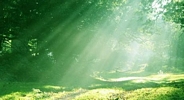|
|
 Acne (1,500) Acne (1,500)
 Addictions (1,500) Addictions (1,500)
 Advice (1,500) Advice (1,500)
 Allergies (1,092) Allergies (1,092)
 Alternative Medicine (1,500) Alternative Medicine (1,500)
 Anti Aging (1,500) Anti Aging (1,500)
 Breakup (1,500) Breakup (1,500)
 Cancer (1,499) Cancer (1,499)
 Dental Care (1,500) Dental Care (1,500)
 Disabilities (1,500) Disabilities (1,500)
 Divorce (1,500) Divorce (1,500)
 Elderly Care (1,498) Elderly Care (1,498)
 Goal Setting (1,500) Goal Setting (1,500)
 Hair Loss (1,500) Hair Loss (1,500)
 Health and Safety (1,497) Health and Safety (1,497)
 Hearing (1,500) Hearing (1,500)
 Law of Attraction (1,499) Law of Attraction (1,499)
 Marriage (1,500) Marriage (1,500)
 Medicine (1,497) Medicine (1,497)
 Meditation (1,499) Meditation (1,499)
 Men's Health (1,500) Men's Health (1,500)
 Mental Health (1,500) Mental Health (1,500)
 Motivational (1,500) Motivational (1,500)
 Nutrition (1,495) Nutrition (1,495)
 Personal Injury (1,499) Personal Injury (1,499)
 Plastic Surgeries (1,500) Plastic Surgeries (1,500)
 Pregnancy (1,496) Pregnancy (1,496)
 Psychology (1,500) Psychology (1,500)
 Public Speaking (1,500) Public Speaking (1,500)
 Quit Smoking (1,500) Quit Smoking (1,500)
 Religion (1,499) Religion (1,499)
 Self Help (1,500) Self Help (1,500)
 Skin Care (1,500) Skin Care (1,500)
 Sleep (1,500) Sleep (1,500)
 Stress Management (1,500) Stress Management (1,500)
 Teenagers (1,492) Teenagers (1,492)
 Time Management (1,500) Time Management (1,500)
 Weddings (1,500) Weddings (1,500)
 Wellness (1,500) Wellness (1,500)
 Women's Health (1,500) Women's Health (1,500)
 Women's Issues (1,500) Women's Issues (1,500)
|
V. Dokov 1 W. Dokov 2 D. Radojnova2
1 Department of general and clinical pathology, Medical University of Varna
2 Department of Forensic Medicine, Medical University of Varna
Key words: pineal glands, length, width, weight, density, cytology, time of death
Introduction: One of the main problems in forensic medicine is the exact determining of the time of death. There is an understanding that there is no universal method, which can solve this problem. That is why finding new and informative methods or morphological indicators is an important task. Little attention has been paid up to that moment on the morphological characteristics of the human pineal gland in the scientific forensic literature. The 24 hour variation in the functions of the pineal gland and the secretion of melatonin are studied in details but there is still lack of data with respect to the morphological variation in the structure of the human pineal gland in the light and dark periods of the day.
Aim: We hypothesised that in relation to the 24 hour variation in the functions of the pineal gland some daily variation in its morphological structures can be expected. With the aim to find morphological indicators that can be used for determining the time of death for the needs of the forensic practice we studied if there are 24-hour changes in the structure of the human pineal gland in the light and dark periods of the day.
Methods: We studied human pineal glands taken from 79 deceased (58 men and 21 women), of the age between 0 and 82 years who died in the period september-december 2002. 37 pineal glands were taken from people who died in the light period of the day, and the material was fixed on average 18 9,28 hours after death. 42 pineal glands were taken from people who died in the dark period of the day and the material was fixed 13 7,93 hours after death. After taking the pineal glands, their length, maximal width, weight and density were measured. We registered the existence or absence of pinealocytes with dark cytoplasm, which is an indicator for secretion of melatonin in the dark period of the day.
Results: The parameters of the pineal glands taken from people who died in the light period of the day were as follow: length (n=31) 8,23 2,52 range /3-13/ mm; width (n=31) 6,13 1,86 range /3-11/ mm; weight (n=27) 127,85 82,67 range /3-380/ mg; density (n=27) 3,24 3,47 range /0,20-9,8/ kg/m3 . The respective parameters of the pineal glands taken from people who died in the light period of the day were: length (n=40) 8,213,05 range /2-17/ mm; width (n=40) 6,321,9 range /1,2-10,14/mm; weight (n=36) 144 82,82 range /2-355/ mg; density (n=36) 3,21 3,42 range /0,71-9,6/ kg/m3.
From the cytological examination of the pineal glands taken from people who died in the dark period of the day / n = 27 / single (40,74 %) or situated in small groups (59,28 %) dark pinealocytes were found. In 22% they were few in 44% of moderate quantity and in 33% abundant. In some 15% the material was with poor and in 85% with high celularity. For those who died in the light period of the day /n = 27/ no pinealocytes with dark cytoplasm were found. In 26 % the material was with poor and in 74 % with high celularity.
Conclusions: In the present study no difference was found between the anatomic characteristics of pineal glands when comparing those taken from people who died in the dark and the light periods of the day. The cytological examination showed that pinealocytes with dark cytoplasm were found only in those pineal glands taken from people who died in the dark period of the day. The continuation of the present study would provide more results, which can be used, for the exact determination of the time of death in relation to whether it has happened in the light or dark period of the day.
|
|
|



